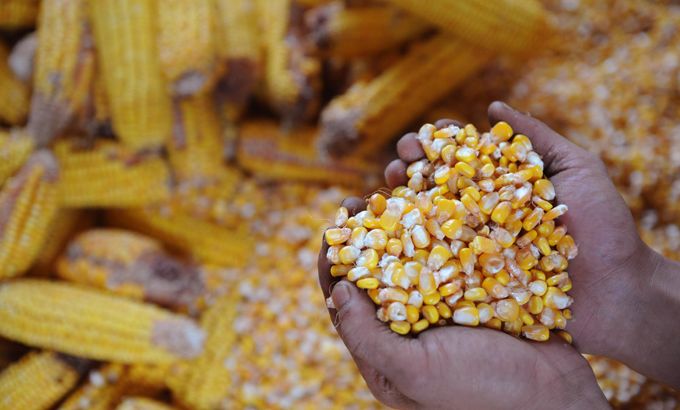
The politics of global food security
As a new report says climate change threatens the world’s three main crops, we ask where the next meal will come from.
Researchers are warning that rising global temperatures could see a shift in the world’s traditional staples and who grows them.
|
“The environmental factors are exacerbating the situation with food shortages and food price rises. But there is a lot about the politics of food that are getting in the way …. The reason that many countries are dependent on maize is they’re encouraged to grow maize for export. These are the types of crops that are more used in processed food, in animal feed rather than concentrating on foods that can feed people more effectively and are more sensitive to different environmental conditions.“ – Deborah Doane, the director of the World Development Movement |
They predict that maize, wheat and rice production will decrease in many developing countries – forcing farmers to replace them with crops more resistant to heat, drought and flooding.
Keep reading
list of 4 itemsCanada wildfires spur evacuation orders, warnings: What you need to know
Evacuation orders issued as wildfire grows near Canada’s Alberta oil patch
Energy summit seeks to curb cooking habits that kill millions every year
The prediction, if true, would put more pressure on a world already facing a potential crisis over global food security.
The UN commissioned report says yields of the world’s three main sources of calories will decrease by 2050, as temperatures rise.
Wheat is forecast to drop by 13 per cent in developing countries, while rice could see yields fall by 15 per cent. And maize farmers in Africa could lose up to 20 per cent of their crops.
But there are other crops which scientists suggest could fill the gap.
These include yam, which is a versatile, starchy vegetable, millet, a cereal crop with a short growing season favoured in developing countries, and lentils, a pulse or bean with a high protein content.
But researchers say even these could be affected by global warming.
A second report from the Consultative Group on International Agricultural Research (CGIAR) – a research programme on climate change, agriculture, and food security – also highlights how food production actually contributes to the level of greenhouse gas emissions.
|
“What is going to impact food production in India largely is change in monsoons. So if we have extreme weather events, if we have untimely rain, if we have no rain, that’s going to affect our food production. And in many parts of India we have started seeing the impact of climate change, especially change in monsoon patterns and its effects on agriculture.” – Chandra Bhushan, a climate change scientist |
It estimates that the processes involved in growing food accounted for between 19 and 29 per cent of global emissions in 2008 – including everything from forest clearance, storage, transport and refrigeration.
And global warming is in turn directly affecting how food is produced – creating a vicious circle.
According to the UN Food and Agriculture Organisation, global food prices hit an all-time high in February 2011. That prompted a reaction from World Bank President Robert Zoellick, who said that prices had reached dangerous levels.
There were riots across the world in countries such as Uganda, Bangladesh, Haiti and Egypt. And the cost of rice jumped by more than 200 per cent, while wheat rose by 130 per cent.
Drought and rising oil prices were blamed, and millions of dollars in emergency food aid had to be distributed.
So how will climate change affect global food security?
Inside Story, with presenter Shiulie Ghosh, discusses with guests: Chandra Bhushan, a climate change scientist and deputy director of the Centre for Science and Environment; Deborah Doane, the director of the World Development Movement and a specialist on corporate power who also blogs on food politics; and Philip Thornton, one of the authors of the report and a scientist working at the CGIAR.
|
“There is a real stress point that could have social and political implications. The last spike in food prices in 2007-2008 caused a global crisis.” Robert Zoellick, the World Bank president |
FACTS ABOUT GLOBAL FOOD SECURITY:
- According to a UN commissioned report, by 2050, the crop yields of wheat could fall by 13 per cent and rice by 15 per cent
- Scientists say yam, barley, millet and lentils may become new staples as these crops can withstand harsh weather conditions
- Scientists say adopting new crops could be a cultural challenge
- Agricultural systems will struggle to feed nine to10 billion people by 2050
- The report predicts that the cost of feeding livestock will become more expensive
- Climate change could also affect the intensity of crop pests and diseases
- Scientists are trying to develop heat and drought resistant crops
- The report calls for global investment in more sustainable agriculture and recommends allocating more funding for agricultural research